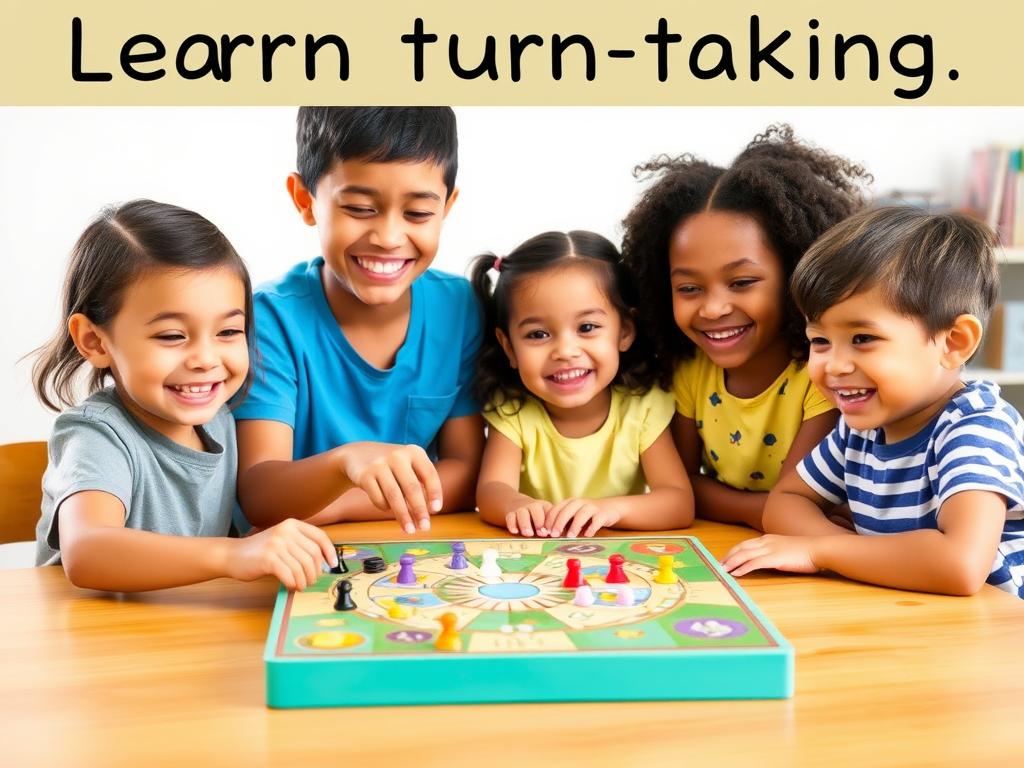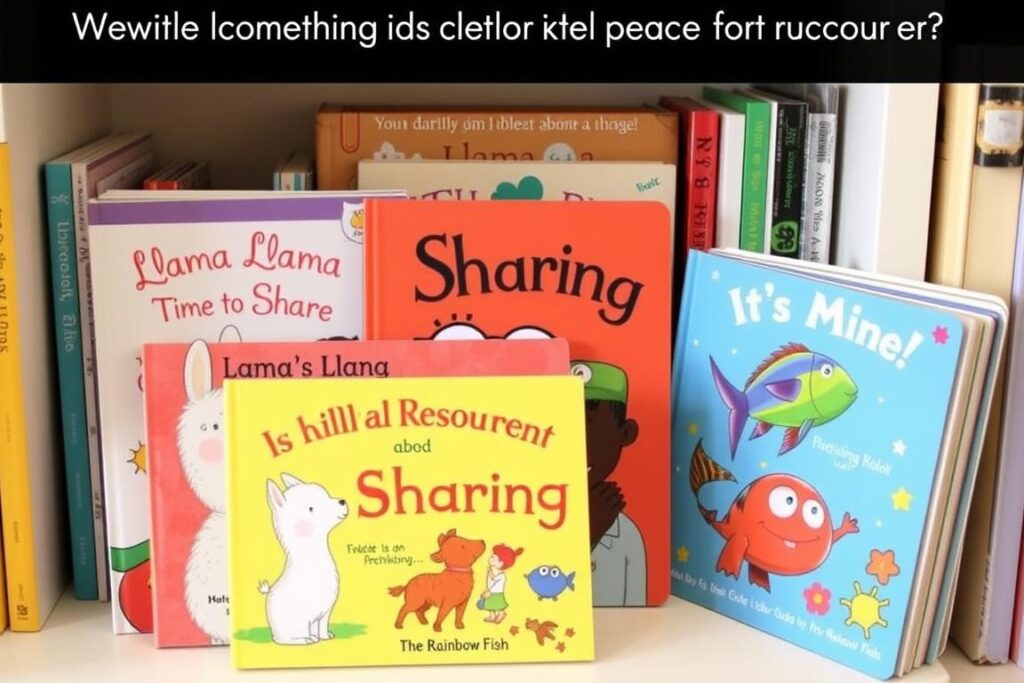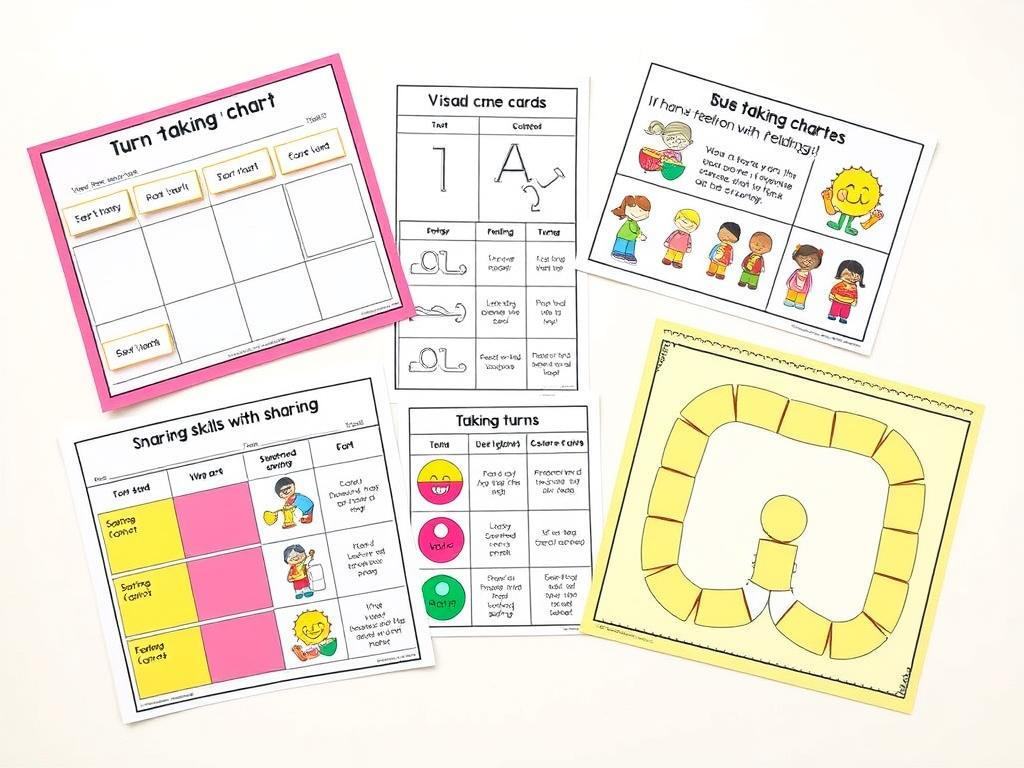How to Teach Sharing and Taking Turns
The good news? Sharing is a learned behavior that develops over time with guidance and practice. With consistent, gentle approaches, you can help your child understand the value of sharing and taking turns. This article explores why children struggle with sharing and provides practical strategies to help them develop this essential skill.
Why Kids Struggle With Sharing
Before we dive into strategies for teaching sharing, it’s important to understand why children find it so challenging in the first place. This understanding can help us approach the situation with empathy and realistic expectations.
Developmental Factors
Young children, especially toddlers and preschoolers, are naturally egocentric. This doesn’t mean they’re selfish—it means they’re developmentally unable to fully understand others’ perspectives. Most children don’t develop the mental ability to share until around 3.5-4 years old, though many parents expect this skill much earlier.
Children under 3 have very little understanding of how others think. They don’t realize that another child doesn’t know they want a toy if they haven’t asked directly. Their concept of time is also limited, making it difficult to understand that giving up a toy now means they’ll get it back later.
Emotional and Cognitive Challenges
For young children, possessions are extensions of themselves. When we ask them to share, we’re essentially asking them to give up a part of themselves. Additionally, children are still developing impulse control—the ability to wait and not grab what they want immediately.
Understanding these developmental realities helps us set appropriate expectations. Rather than labeling a child as “selfish” for not sharing, we can recognize that they’re still developing the cognitive and emotional skills needed for this complex social behavior.
10 Gentle Ways to Teach Sharing and Taking Turns

Teaching children to share doesn’t happen overnight. It requires patience, consistency, and a variety of approaches tailored to your child’s age and temperament. Here are ten effective strategies to help your child develop this important skill:
1. Model Sharing in Daily Life
Children learn by watching the adults around them. Make a point of demonstrating sharing in your everyday interactions: “I’m going to share my cookie with you,” or “Would you like to share this book with me?” When children see sharing as a normal part of family life, they’re more likely to adopt the behavior themselves.
2. Use Language That Encourages Fairness
The words we use matter. Instead of simply saying “share,” which can be a vague concept for young children, try phrases like “now it’s your turn” and “next it will be Sam’s turn.” This helps children understand the give-and-take nature of sharing and provides clear expectations.
3. Praise Sharing When It Happens Naturally
When you notice your child sharing spontaneously, acknowledge it with specific praise: “I saw you share your crayons with your sister. That was very kind and made her happy!” Focus on the positive impact their sharing had rather than just labeling it as “good sharing.”
4. Read Books About Sharing

Stories are powerful teaching tools. Books like “Llama Llama Time to Share” by Anna Dewdney, “It’s Mine!” by Leo Lionni, and “The Rainbow Fish” by Marcus Pfister explore sharing in ways children can understand and relate to. After reading, discuss the story and how the characters felt when they did or didn’t share.
5. Use Timers for Structured Turn-Taking
Visual timers can help children understand when their turn will end and when they’ll get another turn. Set a timer for 3-5 minutes (depending on age) and explain: “You can play with the truck until the timer rings, then it will be Maya’s turn.” This creates clear expectations and helps children learn to wait.
6. Encourage Cooperative Games
Games that require cooperation rather than competition help children practice sharing naturally. Building a block tower together, completing a puzzle as a team, or playing “pass the ball” teaches children that working together can be fun and rewarding.
7. Teach Through Play

Role-playing scenarios can help children practice sharing in a low-pressure environment. Use dolls or stuffed animals to act out sharing situations, or play alongside your child and ask to use something they’re playing with. This gives them the opportunity to practice sharing in a controlled setting.
8. Prepare Kids for Turn-Taking in Advance
Give children a heads-up before they need to share: “In five minutes, it will be Emma’s turn with the swing.” This helps them mentally prepare for the transition and reduces resistance when the time comes to share.
9. Use Visual Cues
Some children benefit from visual reminders about sharing. Create simple social stories with pictures showing the steps of sharing, or use sharing charts that children can reference when playing with others. These visual tools reinforce the concept of sharing in a concrete way.
10. Stay Patient and Consistent
Learning to share takes time. There will be setbacks and challenging moments, but consistency is key. Acknowledge progress, no matter how small, and remember that this is a gradual process. Your patience models the very skills you’re trying to teach.
Games and Activities That Reinforce Sharing

Making sharing fun is one of the best ways to encourage the behavior. These games and activities naturally incorporate sharing and turn-taking while keeping children engaged and entertained.
Group Activities
- Musical Chairs (with a cooperative twist where children help each other find seats)
- Pass the Ball with a rhyme or song to signal when to pass
- Parachute Games where everyone works together to move the parachute
- Cooperative Board Games designed specifically to encourage teamwork
- Group Art Projects where each child contributes to a shared masterpiece
One-on-One Activities
- Building Block Towers taking turns adding blocks
- Collaborative Puzzles where each person adds pieces in turn
- Drawing Together on the same paper, creating a shared picture
- Cookie Decorating where supplies are shared between two children
- Simple Card Games that require taking turns
These activities create natural opportunities for sharing without making it feel forced or punitive. The focus is on having fun together, with sharing as a means to that end rather than the primary goal.
Books and Resources That Support Sharing Skills

Recommended Books
For Ages 2-3
- “Llama Llama Time to Share” by Anna Dewdney
- “Should I Share My Ice Cream?” by Mo Willems
- “The Mine-O-Saur” by Sudipta Bardhan-Quallen
For Ages 4-5
- “It’s Mine!” by Leo Lionni
- “The Rainbow Fish” by Marcus Pfister
- “Share and Take Turns” by Cheri J. Meiners
For Ages 6-7
- “Hey, Little Ant” by Phillip and Hannah Hoose
- “The Giving Tree” by Shel Silverstein
- “Enemy Pie” by Derek Munson
Printable Resources

- Turn-Taking Charts with movable name tags or pictures
- Visual Social Stories showing the steps of sharing
- Feelings Flashcards to help children identify emotions related to sharing
- Sharing Certificates to celebrate progress
- Printable Board Games that focus on taking turns
- Sharing Scenario Cards for role-playing
- Visual Timers to help with turn-taking
- Cooperative Activity Sheets that require sharing materials
These resources provide concrete tools to reinforce the concept of sharing in various contexts. Visual aids are particularly helpful for young children who are still developing language skills and abstract thinking.
Common Challenges and How to Respond
Even with the best strategies, teaching sharing comes with challenges. Here’s how to handle some common situations effectively:
When a Child Refuses to Share
When your child firmly refuses to share a toy, avoid forcing the issue, which can create negative associations with sharing. Instead:
- Acknowledge their feelings: “I see you’re not ready to share your teddy bear right now.”
- Offer alternatives: “Would you be willing to share your blocks instead?”
- Set clear expectations: “You can keep playing with teddy, but when you’re done, Jamie would like a turn.”
- Consider whether the item is special to your child and might be one that doesn’t need to be shared.
When Emotions Run High
Sharing disputes can quickly escalate into emotional outbursts. When this happens:
- Stay calm yourself, modeling emotional regulation
- Validate feelings: “I understand you’re feeling frustrated because you want the toy now.”
- Offer comfort if needed before problem-solving
- Suggest taking a break: “Let’s take some deep breaths together and then figure this out.”
- Once calm, help children express their needs verbally
When Children Fight Over Toys
Physical conflicts over toys require immediate attention:
- Ensure safety first, separating children if necessary
- Remain neutral rather than assigning blame
- Narrate what you see: “I see two children who both want the same truck.”
- Guide problem-solving: “What can we do so you both get a turn?”
- Suggest solutions if children can’t: “Should we use a timer? Or find another truck?”
- Praise any attempts at resolution, even small ones
Setting Boundaries Around Sharing

Not everything needs to be shared all the time. Teaching children about reasonable boundaries is just as important as teaching sharing:
- Allow children to keep special items private or “off-limits” for sharing
- Teach them to ask before taking something that belongs to someone else
- Help them understand the difference between personal items and communal ones
- Model respectful requests: “May I borrow your pencil? I’ll return it when I’m done.”
- Explain that different settings may have different sharing expectations (home vs. school)
These boundaries help children develop a healthy sense of ownership while still learning generosity. The goal isn’t to share everything all the time, but to share willingly and appropriately when the situation calls for it.
Learning to Share is a Journey

Teaching children to share is not a one-time lesson but an ongoing process that unfolds over years. Each child develops this skill at their own pace, influenced by temperament, experiences, and developmental readiness. The strategies in this article provide a foundation, but patience and consistency are your most valuable tools.
Remember that sharing is just one aspect of your child’s social-emotional development. By approaching it with understanding and gentle guidance, you’re not just teaching them to hand over a toy—you’re helping them develop empathy, cooperation, and the ability to build meaningful relationships throughout life.
As your child grows, celebrate their progress in sharing, no matter how small. Each moment of generosity represents a step forward in their journey toward becoming a caring, socially skilled individual.

Eduard Kingly is a travel and lifestyle content creator with a focus on personal development and education. He combines firsthand travel experiences with research-driven insights to guide readers in discovering new places, building better habits, and pursuing meaningful learning.




